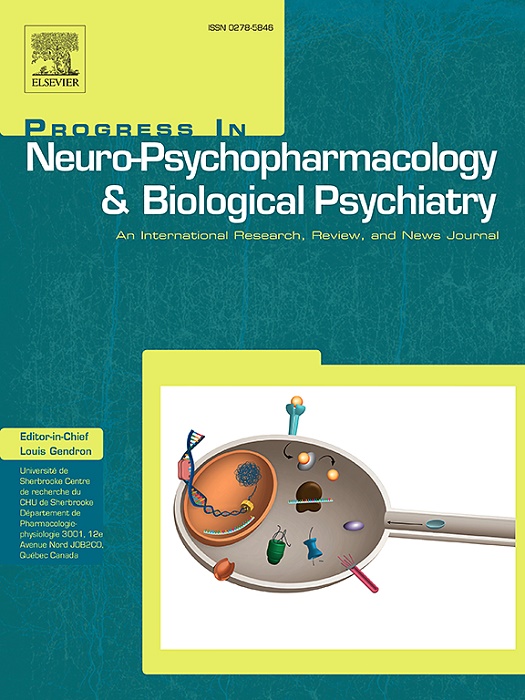Disentangling the role of tau pathology in autism spectrum disorders
IF 3.9
2区 医学
Q1 CLINICAL NEUROLOGY
Progress in Neuro-Psychopharmacology & Biological Psychiatry
Pub Date : 2025-09-15
DOI:10.1016/j.pnpbp.2025.111496
引用次数: 0
Abstract
Autism spectrum disorder (ASD) is a neurodevelopmental condition characterized by deficient social interaction, altered communication, and repetitive, stereotyped behaviors. Pathologically, ASD is characterized by abnormal brain development, including dendritic spine and axonal alterations, which are both associated with synaptic plasticity disturbances. Microtubules (MT) and microtubule-associated proteins (MAPs) are critical in regulating brain development by the neuronal cytoskeleton and synaptic formation. Tau is a neuronal MAP protein in which pathological posttranslational modifications (PTMs) are involved in the pathogenesis of neurodegenerative diseases (NDs), including Alzheimer's disease (AD). In this context, accumulative evidence suggests that tau is altered in mouse models and human patients of ASD. Toxic tau modifications like hyperphosphorylation, a disruptor of MTs dynamics, produced alterations in ASD, suggesting that the imbalance of this protein may contribute to neurodevelopmental deficiencies produced during ASD.
In this systematic review, we revised essential evidence suggesting that the dysregulation of cytoskeletal components produced by tau pathology could play a crucial role in the pathological and behavioral changes produced in ASD.
Finally, we will focus on discussing how the presence of tau pathology in ASD contributes to brain development impairment and whether pathological forms of tau could be suggested as a novel biomedical strategy to support the diagnosis of this disorder.
解开tau蛋白病理在自闭症谱系障碍中的作用。
自闭症谱系障碍(ASD)是一种神经发育疾病,其特征是缺乏社会互动、沟通改变和重复、刻板的行为。在病理上,ASD的特征是大脑发育异常,包括树突棘和轴突改变,这两者都与突触可塑性障碍有关。微管(MT)和微管相关蛋白(MAPs)通过神经元细胞骨架和突触形成在调节大脑发育中起着至关重要的作用。Tau是一种神经元MAP蛋白,其病理翻译后修饰(PTMs)参与神经退行性疾病(NDs)的发病机制,包括阿尔茨海默病(AD)。在这种情况下,越来越多的证据表明,在小鼠模型和ASD患者中tau蛋白发生了改变。有毒的tau修饰,如过磷酸化,一种MTs动力学的干扰物,在ASD中产生改变,表明这种蛋白质的不平衡可能导致ASD期间产生的神经发育缺陷。在这篇系统综述中,我们修改了重要的证据,表明tau病理产生的细胞骨架成分失调可能在ASD产生的病理和行为改变中发挥关键作用。最后,我们将重点讨论ASD中tau病理的存在如何导致大脑发育障碍,以及tau病理形式是否可以作为一种新的生物医学策略来支持这种疾病的诊断。
本文章由计算机程序翻译,如有差异,请以英文原文为准。
求助全文
约1分钟内获得全文
求助全文
来源期刊
CiteScore
12.00
自引率
1.80%
发文量
153
审稿时长
56 days
期刊介绍:
Progress in Neuro-Psychopharmacology & Biological Psychiatry is an international and multidisciplinary journal which aims to ensure the rapid publication of authoritative reviews and research papers dealing with experimental and clinical aspects of neuro-psychopharmacology and biological psychiatry. Issues of the journal are regularly devoted wholly in or in part to a topical subject.
Progress in Neuro-Psychopharmacology & Biological Psychiatry does not publish work on the actions of biological extracts unless the pharmacological active molecular substrate and/or specific receptor binding properties of the extract compounds are elucidated.

 求助内容:
求助内容: 应助结果提醒方式:
应助结果提醒方式:


